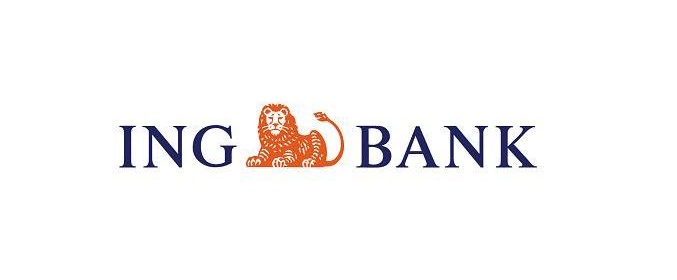Finance
ING predicts soft landing – China, Brazil’s biggest trading partner, should stabilise at a 6-7% a year growth

At a ING Brazil conference “Prospects for Trade & Investment Flows between Asia and Brazil: ING Asia Chief Economist looked at economic developments between Brazil and China.
Despite recent turmoil, the Chinese economy is expected to maintain a growth trajectory of between 6% to 7% annually for the next 10 years. This will boost world demand for iron ore, soybeans and oil. These together accounted for about 80% of Brazilian exports between 2011 and 2014 to China.

“The Chinese government is taking action to correct the response it made after the global financial crisis of 2008, and its focus is growth. I do not see a hard landing, but a soft landing,” said Tim Condon, ING Asia Chief Economist, who was in São Paulo recently for a meeting with Brazilian clients.
He predicted that China is expected to grow this year between six and seven percent.
“It should not be below six-percent, and growth will become increasingly dictated by consumption and not so much by investment.”
Given this scenario, Condon, who has lived in Singapore since 1992, expects Chinese demand for iron ore to grow by about 10% annually for the next 10 years, reaching two billion tons in around 2025. Demand for soybeans is expected to grow six-percent annually, reaching 130 million tons. Oil growth should also stay at six-percent annually, reaching 500 million tons of crude oil.
“Before the global financial crisis of 2008, demand was twice as high. It has settled at a less aggressive level, but is still very relevant to the world and to Brazil, a major exporter of these commodities,” he said.
China is Brazil’s biggest trading partner. Between January and July, shipments to the Asian country totaled USD22 billion, down 19% year-on-year, mainly due to a price drop in commodities. Imports from China reached USD20 billion, down seven-percent year on year.
For Condon, the recent turmoil in China is a reflection of the adjustment that the Chinese government has been making since the end of the first half of 2014. In 2009 and 2010, to lessen the effects of the global economic crisis which halved the pace of expansion of world trade, China eased lending to cities and encouraged banks to increase lending to people and businesses.
As a result, the rate of gross capital formation rose from 40% to 45%, while efficiency and productivity did not accompany this increase, leading to stability in profits for Chinese companies, slower growth, cooling of the housing market and the indebtedness of local governments. This, combined with the effects of the global economic crisis of 2008, lead to two results:
1). World trade fell by 50% from the previous level, recording an increase of ~3% per year from 2009; and
2). The GDP of major economies were also impacted, losing a third of their potential. For example, the US expanded by ~2% from ~3% in the previous period, while China slowed from ~11% to a range between seven and eight percent.
“Prior to joining the World Trade Organization, China grew 8.7%, then this increased to 11% and should now stabilise between six and seven percent. This is an adjustment. The Chinese government is seeking a return to sustainable growth, taking heat out of the credit market and creating mechanisms for trading of bonds of indebted cities,” he said.
In addition to these measures, the government devalued its currency and cut interest rates recently, by 0.25 percentage points.
“A new cut is likely by the end of the year,” said Condon.
China’s urbanisation will continue dictating the country’s growth, which by 2025 has demographic strengths. The Chinese rural labour surplus of Chinese rural work will begin to zero out only in the middle of the next decade.
“From there on it will not be as easy to increase productivity by giving full employment status to new employees,” he said.
Regarding commodity prices, Condon was cautious.
“It’s hard to know how prices will behave, there could be further declines, but it is difficult to establish a trend. It may be that the market is adjusting to the new pace of China’s growth. But on the demand side, the Chinese economy will remain a major driver of this market for the next ten years because of its urbanisation,” he said.
For Anthony van Vliet, Global Head Trade & Commodity Finance at ING, also present at the conference, it is important to note that in some markets, such as iron ore for example, there is excess supply due to the entry into operation of some mines which has increased metal production this year.
“This should also be taken into account.”
For Condon, besides maintaining its growth at about six to seven percent per year, China is expected to maintain a surplus in its dealings with other countries, which will maintain excess liquidity for the government, banks and companies. One target will be to expand access to oil wells and pipelines from Central Asia, in addition to exploring opportunities in natural resources in Africa and Latin America. The internationalisation policy should have some new nuances.
“Last year, the president of the Global Mining Association of China said that 80% of Chinese investments failed. The guideline of the Chinese government is that it launched a new policy,” he said.
The announcement made by the Chinese government to the Brazilian president, Dilma Rousseff, while travelling to Brazil in June is part of this policy. China has pledged to set up a fund to invest USD50 billion in Brazil and showed its interest in also investing in the construction of the Bioceanic railroad which would link Brazil and Peru, estimated at R$40 billion. Interested in an alternative route to the Panama Canal, the Chinese government would finance a significant part of the project, which would construct about 3,500km of tracks in Brazil. The project should have part of the necessary studies submitted by the Brazilian government in May 2016.
“China now wants markets in which to sell its production machinery, electronics, aircraft, high speed trains, nuclear power plants and especially cement and steel, which are in excess production,” noted Condon.
Two recent cases show that this investment policy may give rise to conflicts abroad. In Sri Lanka, the Chinese government was involved in the construction of a new city but has now been suspended, while in Mexico they were working to build a high-speed train line which has now been cancelled.
“The reason in both cases was concerns about transparency, the governments of the countries being invested in want money but also transparency, a scenario for which many Chinese companies are not prepared,” he said.
“In the case of Brazil, it will take time to disburse the USD50 billion as Chinese companies gain experience in doing international business,” he added.
Lynn Ng, Head of Commodities Group at ING Singapore, also present at the event, stated that in addition to investing in overseas projects, the Chinese seek to have control over them and use their own labour to realise them.
“This creates conflicts with local governments,” she said.
In conversations with customers in China and nearby countries, Lynn said the climate remains positive for doing business.
“The Chinese government is taking measures to avoid a hard landing. There are 1.4 billion Chinese living in the country, so the government is seeking ways to enable the economy to grow so that everyone remains satisfied. “



















































